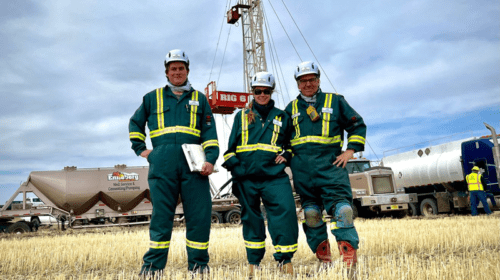Dr. Loren C. Scott, professor emeritus of economics at Louisiana State University (LSU) and president of Loren C. Scott & Associates, just finished his annual Economic Forecast for the State of Louisiana, and the news is the economy is going to get better – but first it’s going to get worse.
“It turns out that if you look at a map of the United States and how far the state has come in recovery from the shutdown due to COVID-19, you’ll see that most of the states are 100 percent back or close to it,” Scott says.
“But in Louisiana, we are only 68 percent back as of this past June. That’s the second worst performance in the country.”
Scott points to the five natural disasters as the main reason Louisiana’s economy hasn’t rebounded like the rest of the nation.
“We’ve had three major hurricanes, Winter Storm Yuri and a major flood in the Lake Charles area,” Scott points out. “Basically, we are way down because when you have a natural disaster your employment drops down like a V. Well, we are in the process of coming up on the other side of the V.”
The worst of the natural disasters was Hurricane Ida. This storm gusted into the state at the end of August with 150 mph winds at landfall. A ship recorded a 172mph wind gust in Port Fourchon. In Louisiana alone, an estimated $15 billion in damage was done. In total, an estimated $65 billion in Hurricane Ida damage was caused in the United States. Ida would also be blamed for 115 fatalities.
Hurricane Elsa ($1.2B) and Hurricane Sam ($0) were the other two hurricanes, while the state also saw Tropical Storm Claudette ($350M) and Tropical Storm Fred ($1.3B) cause destruction. Although Hurricane Sam technically didn’t record any damage costs, Sam produced the most accumulated cyclone energy (ACE) of the 2021 hurricane season and the fifth highest on record. Since the satellite era, there have only been 12 storms, now including Sam, that maintained hurricane status over 11 days.
Winter Storm Uri resulted in severe winter storms that struck the state of Louisiana over a week in February. On March 9th, President Joe Biden declared a major disaster, making federal funding available to individuals and business owners affected.
 Jobs lost to a natural disaster usually rebound sooner; however, with COVID-19 and how extensive the damage was, Scott adds these jobs are taking longer than traditional economic charts and analytics say.
Jobs lost to a natural disaster usually rebound sooner; however, with COVID-19 and how extensive the damage was, Scott adds these jobs are taking longer than traditional economic charts and analytics say.
“Ours were so heavy and so many [that] we’ve been very slow to get back.”
Scott believes this will actually help Louisiana going into 2023.
“Right now, when you look across the state’s different regions and sectors, generally speaking, the economy is very good. Down along the southern part of the state, this is where your LNG export terminals are coming in.”
This is good news for Louisiana and neighboring Texas because, while they continue the momentum of rebuilding the infrastructure, the rest of the nation will be experiencing a recession.
“I am actually predicting a recession next year,” says Scott. “People should be prepared for a national recession. It’ll start probably in the first quarter of next year and the last three quarters.”
He circled back to how Louisiana will navigate the global recession, which he said is currently a much different economy than other states due to its importing exporting ports, fossil fuel ecosystem and the natural disasters.
Scott believes as a whole, the state will add more than 14,000 jobs in 2023 and more than 30,000 jobs in 2024. Europe and Lake Charles may be the main driver behind Louisiana’s economy in 2023, according to Scott.
Currently Europe desperately needs natural gas to help solve its energy and food crisis and Scott believes the LNG ports in Louisiana will be part of the solution.
“One of the ways they are going to solve their [Europe’s] problem is to import more of it through LNG. We have a lot of LNG terminals along the southern part of the state because you have access to natural gas, pipelines and the Gulf of Mexico, which is where you would ship it out, so it gets to the world market.”
Scott brings basic economics back into the conversation with Europe’s current price of natural gas. At the time of the interview, Europe was paying $71 for natural gas while the United States was paying $7.
Referring to the German multinational chemical company and the world’s largest chemical producer, Scott says, “BASF is going to have to find another place to get their oil. Well, guess what they are going to do? They are going to chase the cheapest molecules. And those cheapest molecules are located in south Louisiana and southeast Texas. You are going to see a lot of chemical firms coming to the southern part of Texas and Louisiana.”
Headline photo: Dr. Loren C. Scott
Jason Spiess is a multimedia journalist, entrepreneur and content consultant. Spiess has over 25 years of media experience in broadcasting, journalism, reporting and principal ownership in media companies. (Over 30 years experience if you count his adolescent years as a newspaper delivery boy learning the importance and logistics of daily distribution and monthly door-to-door bill collecting.) Spiess has worked in the areas of oil and gas, UAS and precision agriculture, health care, cannabis, agriculture, real estate, government affairs and economic development. Spiess is the host of two radio programs, Building the Bakken and Coffee & Capitalism, and three specialty programs, MonDak OilField Review, Corporate Ink and UnStuck, that carry a radio network that spans five states and two countries. Spiess is a North Dakota native and graduated from North Dakota State University.
Oil and gas operations are commonly found in remote locations far from company headquarters. Now, it's possible to monitor pump operations, collate and analyze seismic data, and track employees around the world from almost anywhere. Whether employees are in the office or in the field, the internet and related applications enable a greater multidirectional flow of information – and control – than ever before.












